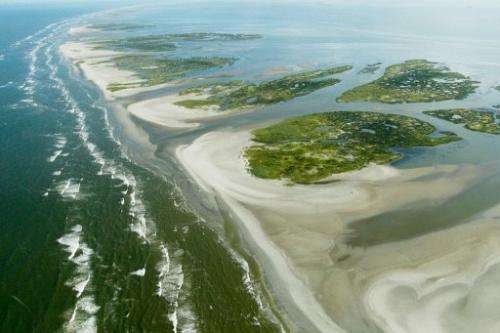An aerial view of the Chandeleur islands on June 23, 2010 in the Gulf of Mexico along the coast of Louisiana. The Gulf of Mexico could see a record-size dead zone this year of oxygen-deprived waters resulting from pollution, US scientists have cautioned based on government data models.
The Gulf of Mexico could see a record-size dead zone this year of oxygen-deprived waters resulting from pollution, US scientists have cautioned based on government data models.
The National Oceanic and Atmospheric Administration's forecasts said the dead zone could be as large as New Jersey, or up to 8,561 square miles (22,172 square kilometers).
Dead zones are toxic to marine life and are caused by excessive nutrient pollution due to agriculture runoff. They are influenced by weather, precipitation, wind and temperature.
When there is little oxygen in the water, most marine life near the bottom is unable to survive.
"This year's prediction for the Gulf reflects flood conditions in the Midwest that caused large amounts of nutrients to be transported from the Mississippi watershed to the Gulf," NOAA said in a statement.
"Last year's dead zone in the Gulf of Mexico was the fourth smallest on record due to drought conditions, covering an area of approximately 2,889 square miles."
The final results will not be known until August. If the region gets a big tropical storm between early July and early August, the estimate would drop to 5,344 square miles.
Over the past five years, the Gulf's dead zone has averaged about 5,600 square miles.
The largest dead zone on record for the waters off Louisiana, Texas, Florida and Mexico was 8,481 square miles in 2002.
NOAA said the Gulf of Mexico dead zone affects "nationally important commercial and recreational fisheries, and threatens the region's economy."
© 2013 AFP



















